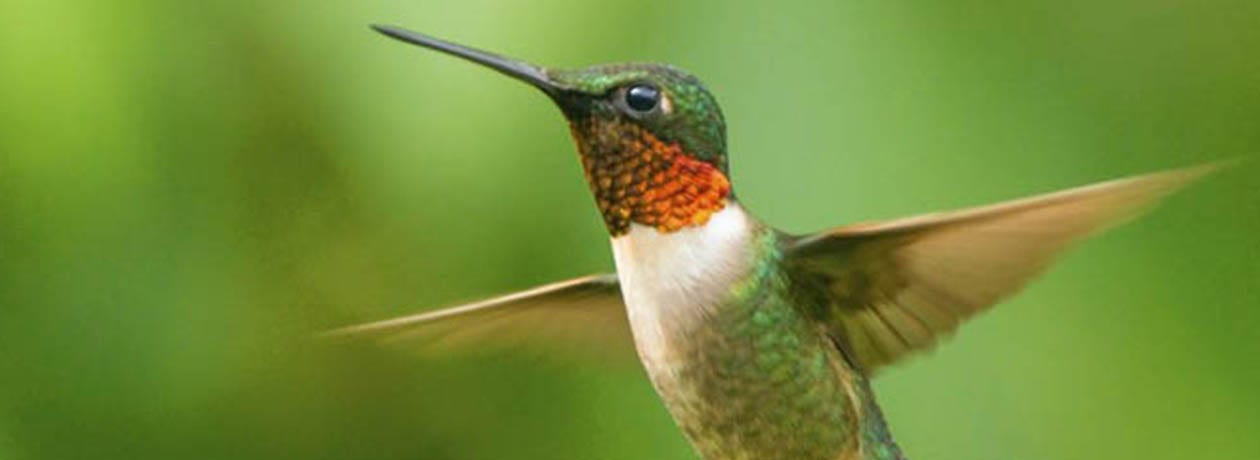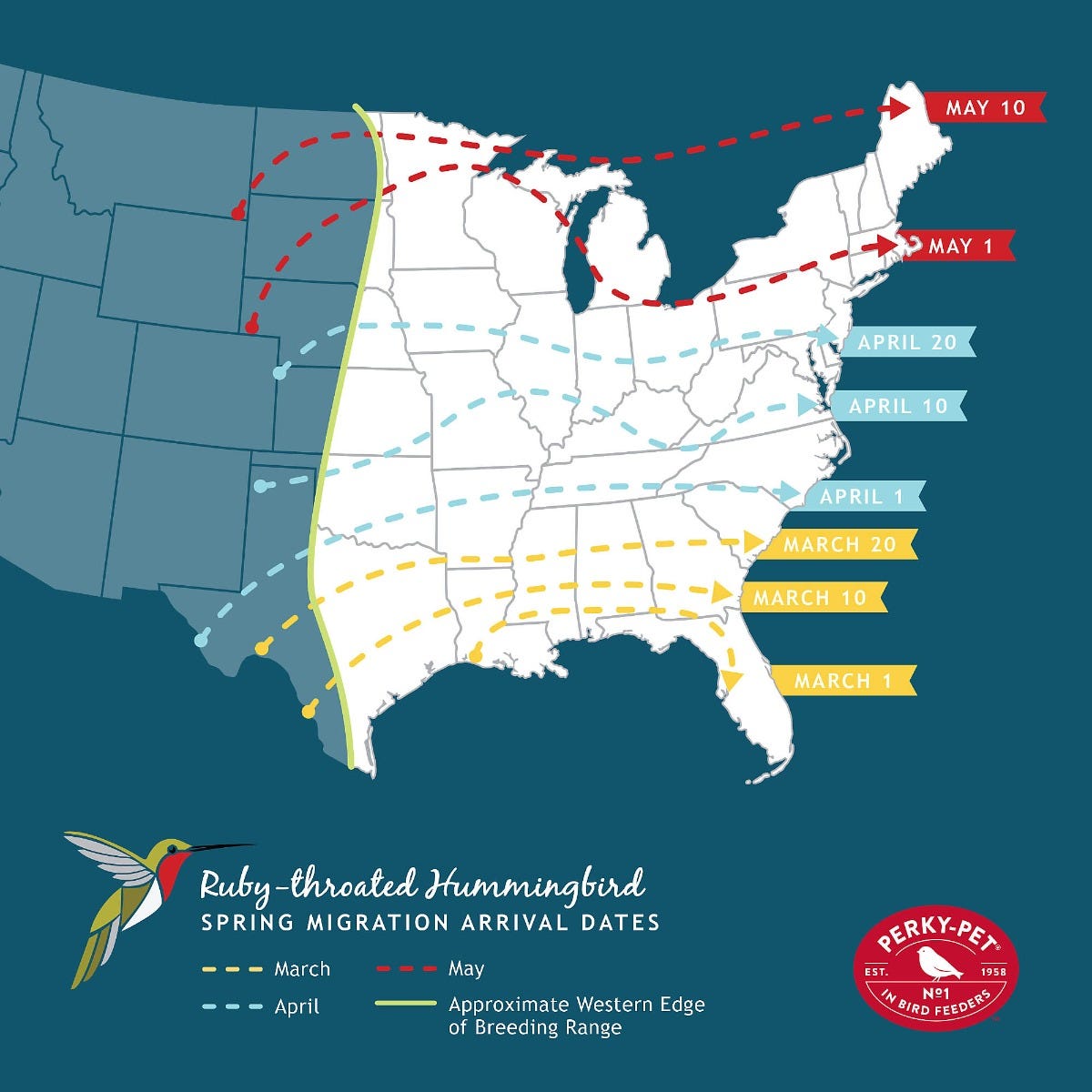Ruby-Throated Hummingbird Migration

If your store is along the migration route of Ruby-throated Hummingbirds, you may need to get your feeder and nectar supplies ordered. Each spring and autumn, you can expect increased traffic in your bird feeder aisles as customers stock up to help out these amazing birds.
At the same time, you can also introduce new homeowners and even businesses to these wonderful miracles of nature.
About Ruby-Throated Hummingbirds
Ruby-throated Hummingbirds may be small in size, but they are big in iridescent colors. Males show off emerald green backs and crowns, white or gray bellies and bright red throat patches.
Females have similar green and white colors; however, they don’t have the ruby colored throats that the males do.
Each year, Ruby-throated Hummingbirds, along with a few other hummingbird species, take part in a long journey known as migration.

RUBY-THROATED HUMMINGBIRD MIGRATION FACTS
Ruby-throated Hummingbirds…
- … breed in North America during the summer months
- … spend their winters in much warmer climates, often in Mexico and Central America.
- … only travel to the eastern half of North America for breeding.
- … may engage in an 18- to 22-hour non-stop trip across the Gulf of Mexico to save time.
- … travel by themselves, not as part of a flock.
- … begin their migration based on the angle of the sun and available food.
- … start their south-to-north migration as early as late February.
- … start their north-to-south migration as early as late August.
How to Help During Migration
Encourage your customers to help out hummingbirds as they undertake their migration. Suggest they:
- Hang Feeders. Set out feeders a few weeks before hummingbird sightings typically begin in the area based on past local records of hummingbird appearances. This will give any early arrivals a food source if needed, as some birds may be arriving before spring flowers are in bloom.
- Keep Feeders Clean and Stocked. Make sure the hummingbird feeders are full and clean. Keep them out of direct sunlight to prevent nectar from spoiling. Try to clean feeders a few times a week to remove any debris or mold that could contaminate the nectar.
- Plant Flowers. Hummingbirds love nectar-producing flowers such as bee balm and honeysuckle. Plant early- and late-blooming flowers to give hummingbirds a selection all season long. Providing a combination of feeders and nectar-producing flowers is the best way to attract hummingbirds.
- Provide Nesting Materials. Unlike some species of birds that prefer houses and nest boxes, hummingbirds build their own nests. They will not use birdhouses to lay their eggs and raise their young. Instead, provide them with nesting materials such as cotton, moss, feathers and spider silk so they can build nests nearby.
- Maintain the Supply. Keeping feeders full and available throughout the autumn will show the new juveniles that a yard is a hot spot for a nutritious meal. It also strengthens them for their trip south while helping to ensure that they will return in the spring.
